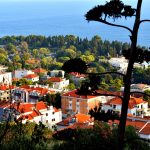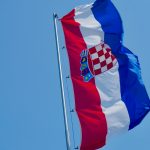ZAGREB, November 28, 2018 – The head of the national statistical office (DZS), Marko Krištof, said on Wednesday the good tourist season, also owing to the FIFA World Cup, resulted in higher-than-expected economic growth rates. The DZS today released an initial estimate of GDP showing that the Croatian GDP grew by 2.8% in Q3 2018, compared to Q3 2017. The rate was lower than in Q2 but higher than anticipated. This was the 17th quarter in a row that GDP grew, albeit at a slower rate than in Q2, when it grew by 2.9% year on year. Eight analysts polled by Hina predicted the growth would be 2.3%, their forecasts ranging from 2.2 to 2.5%.
“The expectations were that the growth would not be as high as in the previous period, but the good tourist season, probably also owing to the football world cup, increased the growth rates,” Krištof said at a press conference.
Broken down by component, the biggest contribution to GDP in Q3 came from higher exports of goods and services. Krištof said this was in line with forecasts as tourism’s share was the strongest in Q3.
The contribution of domestic demand was also positive and, of its components, household spending, which grew 2.7% on the year, had the strongest impact on economic trends.
Gross added value in Q3 went up 2.2% year on year in real terms and the biggest contribution came from retail and wholesale, which grew for the 49th month in a row.
The biggest contribution to the volume decrease was recorded in manufacturing, first and foremost due to a production volume decrease in shipbuilding.
Marked growth, of 7.1%, was recorded in construction. All sectors except industry, mining and extraction recorded positive growth rates.
According to seasonally adjusted data, Croatia grew faster than the European Union average for the third quarter in a row. Excluding the one quarter in which growth was somewhat slower, Croatia would have had a faster yearly growth for 13 quarters in a row, said Krištof. The EU growth average is 1.9%.
Croatia recorded a twice as fast growth also quarterly, 0.6% as against 0.3%, which again was the third straight quarter in which Croatia grew faster than the EU average.
Commenting on the latest statistics, Economy Minister Darko Horvat said on Wednesday that reducing the tax burden on the business sector was slowly yielding results.
“The processes regarding the implementation of the action plan to reduce the tax burden on the business sector are slowly yielding results,” Horvat told reporters outside the government headquarters. “These processes will continue for a long time,” he said, adding that similar action plans were being prepared.
He went on to say that an action plan to be presented to the government in about ten days would propose the cancellation or simplification of 322 procedures, including the cancellation or reduction of some of the non-tax levies.
Horvat said that he was confident growth projections in the first two quarters of next year, when the planned measures are to be implemented, would continue to be good.
For more on the Croatian economy, click here.







